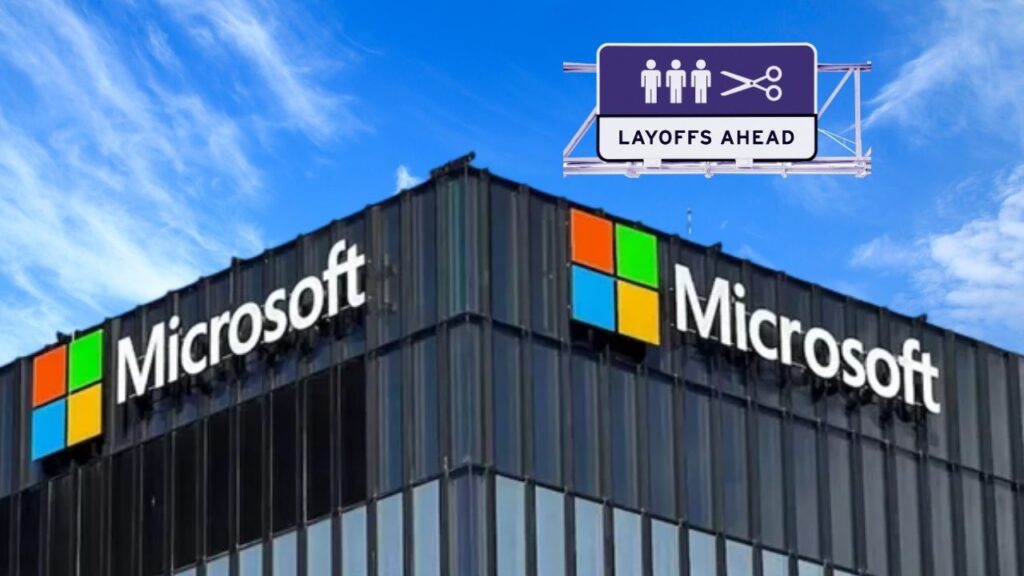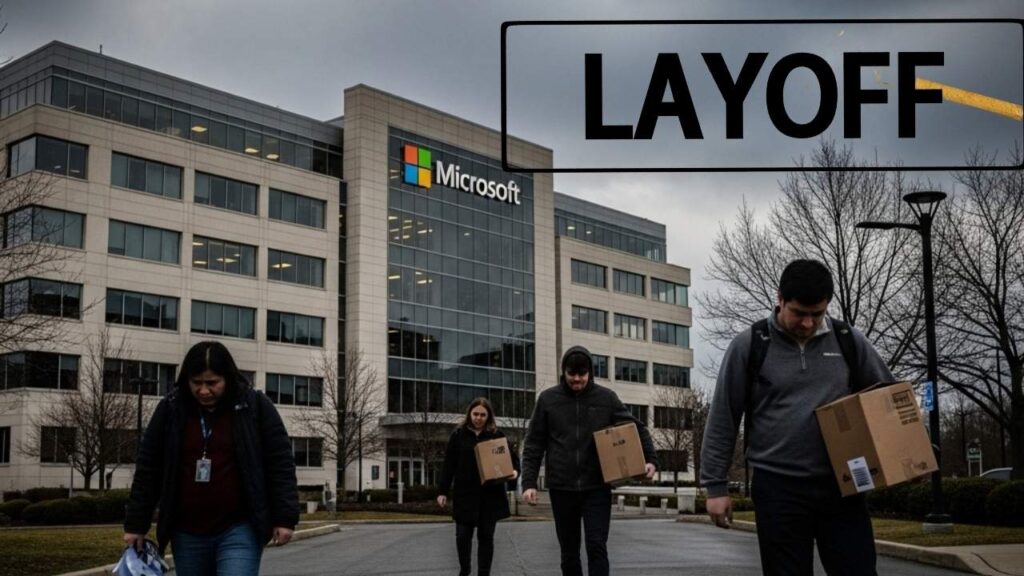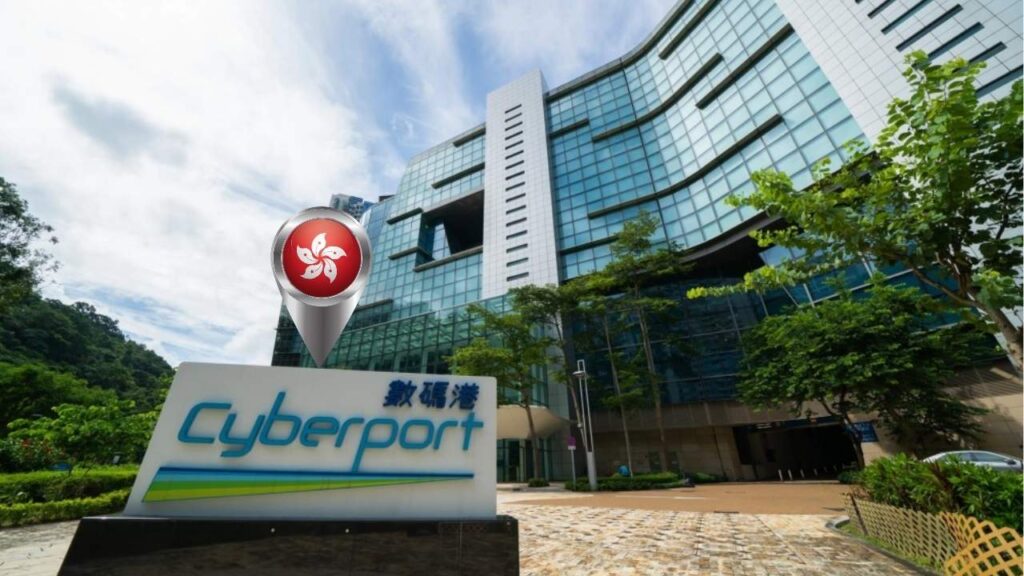Microsoft Cuts 300 More Jobs: Microsoft, a leader in the global technology industry, has announced another round of job cuts, eliminating over 300 positions just weeks after its most significant workforce reduction in years. This latest move, following the layoff of over 6,000 employees in May 2025, is part of a sweeping transformation driven by the company’s shift toward artificial intelligence (AI) and operational efficiency. The impact is being felt across the tech sector, raising important questions for professionals, businesses, and the future of work.

This comprehensive article breaks down the reasons behind Microsoft’s layoffs, who is most affected, and what these changes mean for the broader tech landscape. It also provides practical advice for those impacted and valuable insights for anyone navigating a rapidly changing job market.
Table of Contents
Microsoft Cuts 300 More Jobs
| Key Point | Details |
|---|---|
| Total Jobs Cut (May–June 2025) | Over 6,300 globally (6,000 in May, 305 in June) |
| Latest Layoff Location | Primarily Washington State, USA |
| Roles Most Affected | Software engineers, product managers, coders, some managers |
| Reason for Layoffs | AI-focused restructuring, organizational realignment, cost optimization |
| Microsoft Global Workforce (2024) | ~228,000 employees |
| Largest Layoff Since | 2023 (10,000 jobs cut) |
| AI Impact | Up to 30% of code now written by AI in some projects |
| Official Microsoft Website | Microsoft.com |
Microsoft’s decision to cut over 300 more jobs—on top of 6,000 layoffs just weeks earlier—marks a pivotal shift in the company’s strategy and the tech industry as a whole. Driven by massive investments in artificial intelligence and a need for organizational agility, Microsoft is realigning its workforce to meet the demands of a new era. While these changes are difficult for those affected, they also signal new opportunities for professionals who are ready to adapt, upskill, and thrive in an AI-powered world.
Why Is Microsoft Cutting More Jobs?
The AI-Driven Transformation
Microsoft’s latest layoffs are not isolated events but part of a broader, AI-driven transformation. Company leaders have emphasized that these cuts are not about employee performance but about “organizational restructuring” to adapt to a rapidly evolving tech landscape.
AI’s Role:
- Microsoft is investing heavily in AI infrastructure, with plans to significantly increase spending on AI in the coming years.
- AI tools now generate up to 30% of code in certain projects, and the company aims to increase this figure further.
- As AI automates more tasks, especially in software development, the need for large teams of coders and project managers is diminishing.
Cost Optimization:
- Despite strong financial performance, the company is facing rising costs from its massive AI investments.
- To offset these expenditures, Microsoft and similar companies are reducing headcount and reallocating resources.
Not Just Microsoft: An Industry Trend
Microsoft’s actions reflect a wider trend across the tech sector. Other major technology companies are also trimming their workforces as they focus on AI and automation. Many are finding that internal use of AI allows them to operate with fewer employees.
Who Is Being Laid Off?
Roles and Departments Most Affected
While Microsoft has not disclosed every role impacted in the latest round, patterns from previous layoffs provide a clear picture:
- Software Engineers and Coders: A significant portion of the jobs cut have been coding professionals.
- Product and Project Managers: Many cuts have been in project management, as the company aims to reduce management layers and streamline decision-making.
- Managers: Fewer than 17% of the latest layoffs were in management positions.
- Other Teams: The layoffs have spanned multiple teams and geographies, affecting both technical and non-technical staff.
Personal Stories: The Human Impact
Some employees, including those with decades of service, have reported being selected for layoff by computer algorithms rather than human managers. This approach has drawn criticism, especially regarding its impact on older workers and those with health conditions.
How Are Layoffs Being Implemented?

Use of Algorithms and Automation
- Some employees have reported being selected for layoff by automated systems.
- This approach has raised concerns about fairness and transparency.
Communication and Transparency
- Microsoft has stated that these layoffs are not performance-based and are part of a strategic realignment to focus on AI and high-value work.
- The company has not always specified which departments are most affected, leading to uncertainty among employees.
The Bigger Picture: Why Now?
Financial Performance vs. Workforce Reduction
It may seem surprising that Microsoft is cutting jobs while posting strong profits and revenues. However, the company’s leadership argues that these changes are necessary to remain competitive and invest in the future.
- AI and Cloud Investments: The company’s AI and cloud ambitions require enormous capital. Resources are being reallocated from traditional roles to support these priorities.
- Efficiency and Agility: Streamlining management layers and automating routine tasks allows Microsoft to operate more efficiently and respond faster to market changes.
Impact on the Tech Industry
These layoffs are part of a larger shift in the tech labor market, where AI is reshaping job requirements and creating new opportunities for those with the right skills. Companies are increasingly prioritizing roles in AI development, data science, cybersecurity, and cloud infrastructure.
Practical Advice: Navigating Tech Layoffs
For Employees
- Stay Updated: Regularly check official company communications for the latest information.
- Upskill: Focus on learning AI, cloud computing, data science, and cybersecurity—areas where demand is growing.
- Network: Join professional groups, attend industry events, and connect with peers online.
- Seek Support: Utilize career counseling, resume workshops, and mental health resources, especially if you’re directly impacted.
For Job Seekers
- Highlight Adaptability: Showcase your ability to learn and use new technologies.
- Build AI Literacy: Even basic understanding of AI tools can set you apart.
- Target Growth Sectors: Look for roles in companies investing in AI, cloud, and cybersecurity.
For Employers
- Communicate Clearly: Honest, transparent communication builds trust during difficult transitions.
- Offer Transition Support: Provide severance, job placement assistance, and mental health resources.
- Invest in Reskilling: Help current employees transition to new roles by offering training in high-demand skills.
The Human Side: Mental Health and Wellbeing
Corporate downsizing doesn’t just affect careers—it impacts families, mental health, and entire communities. Many professionals report increased stress, anxiety, and uncertainty following layoffs. Companies are being urged to provide more robust mental health support and resources for those affected.
What Does the Future Hold?
AI’s Expanding Role
AI is fundamentally changing the nature of work at Microsoft and beyond. As more routine coding and project management tasks are automated, the focus is shifting to roles that require creativity, critical thinking, and emotional intelligence—skills that machines cannot easily replicate.
Opportunities for Growth
While layoffs are challenging, they also create opportunities for those willing to adapt. As companies invest in AI and next-generation technologies, demand for specialized talent in these areas will continue to grow. Professionals who are proactive in learning new skills and adapting to change will be best positioned for success.
Industry-Wide Implications
Microsoft’s restructuring is a bellwether for the entire tech industry. As AI adoption accelerates, similar workforce realignments are likely at other major companies. The key for professionals is to remain agile, keep learning, and focus on areas where human skills complement AI.
Researchers Recreate Ancient Egyptian Blue Pigment With Modern Science
India Launches BharatGen AI Model to Revolutionize Multilingual Innovation at BharatGen Summit
MIT Engineers Develop New 3D Printing Method to Reduce Waste and Enable Complex Designs
FAQs About Microsoft Cuts 300 More Jobs
Why is Microsoft laying off so many employees?
Microsoft is restructuring to focus on AI, automation, and cloud infrastructure, which reduces the need for certain roles, especially in software engineering and project management.
Are these layoffs performance-based?
No, Microsoft has clarified that the recent layoffs are not related to individual performance but are part of a broader organizational realignment.
Which roles are most affected?
Software engineers, coders, and project managers have been most impacted, with fewer layoffs in management positions.
Is this trend unique to Microsoft?
No, similar layoffs have occurred at other major technology companies, all driven by AI adoption and efforts to streamline organizations.
How can affected employees find new opportunities?
Upskilling in AI, cloud computing, and cybersecurity, networking, and seeking career coaching are recommended steps. Many tech companies and startups are still hiring for specialized roles.



















